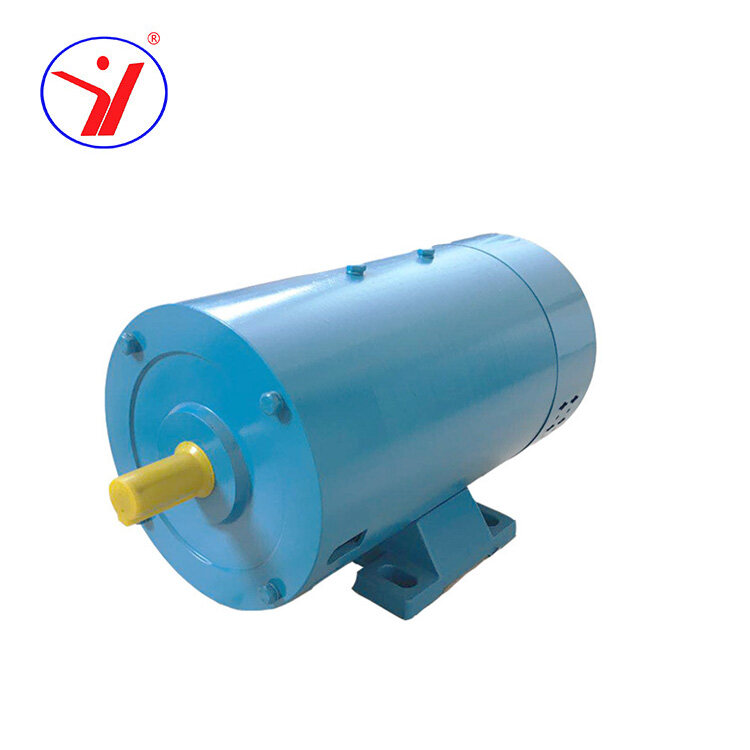An In-Depth Exploration of Brushless Asynchronous Motors
Introduction:
In a world driven by technological advancements, the role of motors in various applications is pivotal. This article delves into the realm of "brushless asynchronous motors," shedding light on their intricate workings, advantages, and comparisons with traditional brushed motors.
I. Overview of Brushless Asynchronous Motors:
Brushless asynchronous motors, a subset of electric motors, stand out for their innovative design and operational efficiency. They operate on the principle of electromagnetic induction, a fundamental concept in electrical engineering. Unlike their brushed counterparts, these motors boast a structure devoid of physical brushes, minimizing friction and wear. This design choice not only enhances longevity but also reduces the risk of sparking, making them safer in certain applications.
II. Advantages and Disadvantages:
Advantages:
Brushless asynchronous motors present a paradigm shift in energy efficiency. Their high operational efficiency and smooth performance make them ideal for applications demanding precision and reliability. Additionally, the absence of brushes eliminates the need for frequent maintenance, reducing downtime. This reliability factor makes them particularly attractive in critical systems such as medical equipment and aerospace applications.
Disadvantages:
Despite their merits, these motors aren't without limitations. Potential drawbacks include electronic complexities and initial cost implications. Understanding these aspects is crucial for informed decision-making in diverse applications. The complexity, however, is often mitigated by advancements in control systems and electronics, making the initial investment worthwhile in the long run.
III. Advantages in Various Applications:
The versatility of brushless asynchronous motors finds expression across multiple domains. In industrial settings, they power machinery with enhanced precision, reducing energy consumption. Simultaneously, in consumer electronics, these motors drive innovations in gadgets, ensuring a seamless user experience. The automotive industry, too, embraces these motors for electric vehicles, benefiting from improved efficiency and reduced environmental impact.
IV. Comparative Analysis with Brushed Motors:
Comparing brushless asynchronous motors with their brushed counterparts reveals stark differences in both structure and performance. The absence of brushes in the former translates to higher efficiency, reduced maintenance, and an extended lifespan. These advantages position them as frontrunners in modern technological applications. Moreover, the elimination of physical brushes addresses concerns related to electromagnetic interference (EMI), making brushless motors suitable for sensitive electronic applications.
V. Future Trends and Developments:
Looking ahead, ongoing research in brushless asynchronous motor technology promises breakthroughs. Innovations focusing on materials, control systems, and integration with smart technologies hold the key to further enhancing their capabilities. This aligns with the broader trend toward sustainable and efficient energy solutions. The integration of IoT (Internet of Things) capabilities into these motors opens up possibilities for real-time monitoring, predictive maintenance, and adaptive control strategies.
VI. Maintenance and Troubleshooting:
Maintenance considerations for brushless asynchronous motors center around electronic components. Regular inspections and software updates contribute to prolonged motor life. Understanding common issues, such as sensor malfunctions, enables effective troubleshooting and ensures uninterrupted operation. Remote diagnostic capabilities, enabled by advanced sensor technologies, facilitate proactive maintenance strategies, reducing the need for unscheduled downtime.
VII. Environmental Impact and Energy Efficiency:
Beyond performance, the environmental impact of brushless asynchronous motors is noteworthy. Their energy-efficient operation aligns with sustainability goals, making them integral components in the transition to greener technologies. The reduction in energy consumption not only lowers operational costs but also contributes to the global effort to reduce carbon emissions. This environmental consciousness positions these motors as key players in eco-friendly technology solutions.
VIII. Case Studies and Real-World Applications:
Examining real-world scenarios, brushless asynchronous motors have revolutionized diverse industries. From precision manufacturing equipment to consumer drones, these motors showcase their adaptability and reliability in the face of varied challenges. In the medical field, for instance, these motors are employed in medical imaging devices, where precision and reliability are critical. The use of brushless motors in drones ensures stable flight and efficient power utilization, exemplifying their role in emerging technologies.
IX. Conclusion:
In summary, the journey through the world of brushless asynchronous motors reveals a landscape rich in innovation and potential. As technology advances, these motors are poised to play an increasingly crucial role, not only in efficiency but also in shaping a more sustainable and connected future. Embracing these advancements opens doors to a new era of possibilities, where reliability, efficiency, and environmental consciousness converge to drive progress across diverse industries. The brushless asynchronous motor, with its intricate design and multifaceted applications, stands as a beacon of technological evolution, paving the way for a future where efficiency and sustainability go hand in hand.


